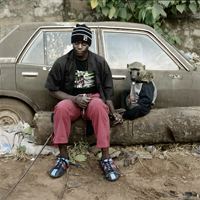Frankenstein or, The Modern Prometheus as it is also known, was first published in 1818. Written by Mary Shelley, this well-known tale challenges the reader to suspend hi or her disbelief, to paraphrase Samuel Taylor Coleridge, and bear witness to the “birth” of a piecemeal man, a man whose re-animating seems less than probable. Or Does it?
Modern times bring with it fresh scientific perspective. Through advances in medical methodology, genetics, and surgical strategies, the Frankenstein monster seems closer to fact than a imagined fiction. Following are what I have found in examining possible courses to take in the construction and re-animation of a human body.
Galvanism
Named for the Italian scientist, Luigi Galvani who studied the effects of electricity on nervous system and muscles. The idea behind this study was that if one could apply just the right amount of electricity to a dead animal that you could re-animate it…or at least it would twitch a lot. (http://web.fccj.org/~ethall/electro/electro.htm) Though galvanism is still practiced, it is now the term used for the physical therapy technique. Chiropractors such as Dr. Ann Raymer “a circuit of a sine wave current passes through two strategically placed pads creating a rhythmic contraction and relaxation of muscles on each side of the spine. This massaging effect helps eliminate toxins by aiding the de-congestion of the lymph system and increasing circulation. This is often used to help with sore muscles, and to rehabilitate and strengthen injured muscles.” (http://users.moscow.com/araymer/therapies.html)
Test Tube Organs
If Dr. Frankenstein had been able to conjure the correct amount of electricity to course through his patient, he would still have had to fill the body with viable organs. Well it seems that some university scientists “took cell samples from several patients with conditions that cause a weak bladder. In the lab, the researchers coaxed the cells to grow into new bladders. The lab-grown organs were then transplanted into the patients. Four years later, the bladders are functioning well and relatively free of problems common to implanted bladders cobbled together from intestinal and other tissues.” (http://www.soundmedicine.iu.edu/segment.php4?seg=836) With this newly emerging medical science, Frankenstein would have been able to generate new versions of the dead organs that he had harvested from whatever dubious point of origin. Not dealing now with lifeless lungs and gangrenous livers, but newborn lungs and livers would have greatly increased the vitality and viability in his creation. Important still, would be that if he could use as whole of a body as he could find, he would also limit the rejection of foreign proteins regarding the differing body parts negotiated into one whole. Although many new drugs are available (Thymoglobulin® et al) that aid to lower the incident of acute rejection, Use of organs and tissue grown in a test tube from the same cadaver would be best used to prevent issues. Skin synthesis or a type of “cultured skin” has been much sought after in repair of skin tissue. In a July article, appearing in Technology Review (MIT) Carolyn Strange writes that “According to its manufacturer, Organogenesis of Canton, Mass., when the living-skin tissue was used in clinical studies on patients…57 percent of patients who had battled their ulcers for more than a year saw their wounds close completely, compared with 17 percent of those receiving conventional treatment.” (http://www.technologyreview.com/Biotech/11575/) Perhaps Dr. Frankenstein’s creation would not have been so unbecoming had he had a way to achieve “…skin looks, feels, and behaves like normal human skin. When wounded, it can even heal itself.” (http://www.technologyreview.com/Biotech/11575/)
Nerve and Plastic Reconstruction
As for the nerves and their reconstruction, we simply need to ask the folks at The Institute for Advanced Reconstruction whose surgeons “can restore a healthy, normal appearance to patients who have suffered some type of trauma. Our plastic surgeons have mastered a wide range of techniques that can help give you back a normal life.” Because “developments allow patients to regain function and restore appearance in ways that were almost unimaginable in the not-too-distant past.” (http://www.advancedreconstruction.com/) What Frankenstein did not have available was surgical procedures such as brachial plexus reconstruction, bells palsy treatment, radial and ulnar nerve surgery, and foot drop treatment. In these treatments, grafts may be taken from other areas of your body and placed into the needed connections, transplants from a donor can be used in longer severe-ages, though they will need immunosuppression such as was with the organ donation.
Limb Reattachment
Penn State Milton S. Hershey Medical Center asserts that surgeons now can reattach amputated limbs to bodies. The good Dr. would be rolling in his grave had he known that in the future that doctors can now reattach limbs in such a way as we do now. Paired with the nerve repairs and skin graft/growth, he could have made a far superior monster in both medical and aesthetic terms.
“Remarkable advances in microsurgery have made it possible to reattach amputated limbs. Special microsutures and microscopes have been developed which allow a microvascular surgeon to repair the blood supply to the reattached limb. Microvascular surgeons have developed new techniques for repairing these very small blood vessels. These surgeons, originally trained in orthopaedic, plastic and general surgery, receive additional training in this highly specialized area.”
(http://www.hmc.psu.edu/plasticsurgery/services/adult/recon/microsurgery.htm)
Special microsutures and microscopes have been developed which allow a microvascular surgeon to repair the blood supply to the reattached limb.
Analysis
When we look at the problem at hand, (being how to produce a living, breathing, monster with a modicum of reliability and sustainability) we must forgive Dr. Frankenstein for the appearance, mismatch and motility of his creation. In this, the 21st century, many new and innovative medical procedures are at the beck and whim of the well-trained army of surgeons from around the globe. Whether it be gene therapy to conquer diseases, grafts, transplants or even genesis of tissue, organs or limbs, the current monster would be surely a heartier specimen.







